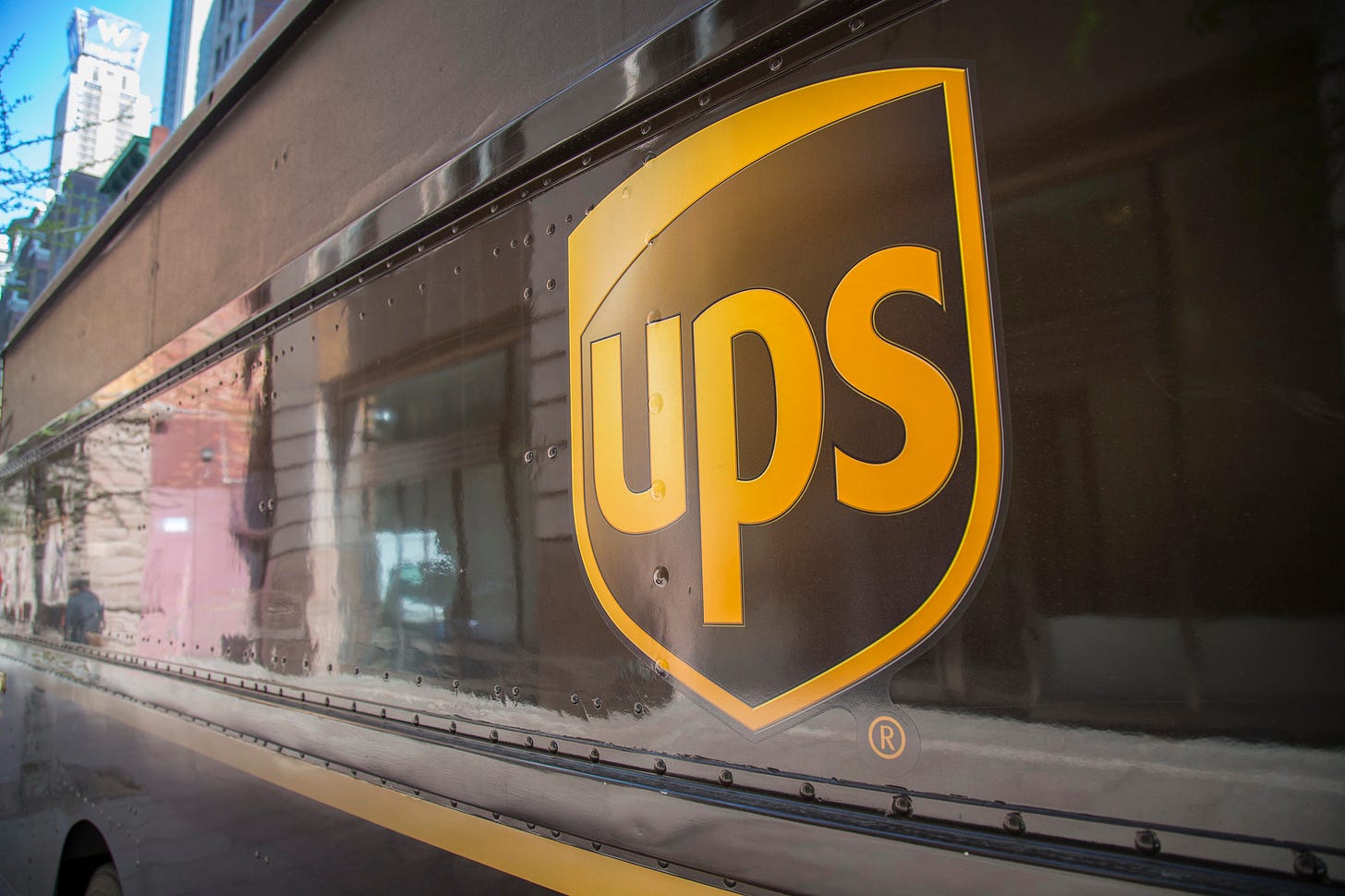UPS Considers its End-to-End Solutions Sets it Apart From the Competition
UPS reported revenue and volume declines for Q2 as it retooled its network and reduced its exposure to Amazon, its largest customer, amid expanded competition and an uncertain domestic and global market.
“Our second quarter results reflect both the complexity of the landscape and the strength of our execution. We are making meaningful progress on our strategic initiatives, and we’re confident these actions are positioning the company for stronger long-term financial performance and enhanced competitive advantage," said UPS CEO Carol Tome in UPS’ press release.
Indeed, the uncertainty in the global and domestic markets were enough for UPS not to provide guidance for the rest of the year. However, questions abound regarding increased domestic competition and its impact on UPS.
The U.S. Domestic division, UPS' largest division, reported a 0.8% decline in revenue, a 7.3% decline in operating profit, and a 7.3% decline in average daily volumes (ADV). The decrease in ADV was led by Deferred (down 16.8%) and Next Day (down 8.3%). The declines in Deferred and Next Day were likely primarily due to the reduction of Amazon volumes.
The same could be said about Ground, but to an extent. Ground's revenue declined 2% year-over-year, and average daily volumes fell 6.6% year-over-year. However, average revenue per parcel increased 4.9% to $11.46, propped up by higher rates and surcharge increases.
When asked about smaller parcel carriers taking share in the parcel market, UPS CEO, Carol Tome, told analysts during the company's earnings call, "Well, competition's good. I would say that our offering differs significantly from theirs [other small parcel carriers] because we operate an end-to-end network. In every aspect of the supply chain, we can meet our customers' needs. From a market share perspective, we look at the addressable market, and for us, we define the addressable market as the market that excludes Amazon and excludes packages that are less than one pound."
Tome continued, "And we can talk a lot about the capabilities that we offer that our competitors do not. Like in healthcare, we have special labels that our competitors do not. Or we have RFID tagging on our packages that our customers do not. Or we offer returns that are boxless, label-free, and unmatched by our competitors. So, from a capability perspective, we will continue to invest in the capabilities that set us apart from our competitors."
Some of these claims can be debated, such as boxless/label-free returns. FedEx, for example, has partnered with Blue Yonder to offer such returns.
What's not noted is that the increased competition is primarily in the business-to-consumer (B2C) market. UPS has struggled in the B2C market because it's typically more expensive for it to deliver such packages compared to business-to-business (B2B) packages. Surcharges are utilized to help UPS prop up its revenue-per-package in the B2C market (and, for that matter, across all of its services within B2B).
B2B ADV Continues to Lag
According to UPS CFO Brian Dyke, B2B volume was down 2.3% in Q2 compared to last year due to softness in manufacturing activity. Meanwhile, B2C average daily volume was down 10.9% year over year, primarily due to the actions UPS took to improve revenue quality. B2B represented 43.7% of our U. S. Volume, which was a 220-basis point improvement versus last year.
Integrator vs B2C Parcel Carriers
However, Dyke told analysts that the increase in revenue per package for the US Domestic division, 5.5%, "is starting to show that UPS' strategy of dynamically changing the volume in the network is working. If you look at the segments where it really matters for us, SMB, our penetration was up 230 basis points, and Commercial, our penetration was up 220 basis points. We are shifting the volume and the characteristics in our network to customers that see value in our service offering."
An end-to-end solution, such as UPS's, is indeed an advantage, particularly as an integrator. FedEx and DHL also enjoy offering similar end-to-end solutions.
An integrator's network is more complex than those that focus solely on the domestic market. However, shippers have long memories and for many of them, a big lesson learned during COVID was not to put all or most of their volumes with one or two parcel carriers. Since COVID, top-tier omnichannel retailers average around 6-8 last-mile delivery partners to optimize coverage, cost, and service levels, according to a 2023 report from project44. As shippers spread out their last-mile volumes, it has come at the expense of UPS, FedEx, and perhaps even the USPS.
But, as UPS executives have noted, it's the end-to-end solutions that separate them from most of the B2C last-mile competition. So, it's likely that much of this volume that has shifted away from UPS over the years is perhaps not the profitable volume that it targets.
- Cathy
For more thoughts and shares, be sure to follow me on Twitter, BlueSky and LinkedIn.
I wear a number of hats these days. I’m also helping out the Reverse Logistics Association as a research manager, and at JOC, I help out as a research analyst and write a weekly LinkedIn newsletter, Freight Forward, summarizing JOC & other published articles and providing an outlook for the week ahead. In addition, be sure to check out my website and be sure to sign up to receive more blog posts.




